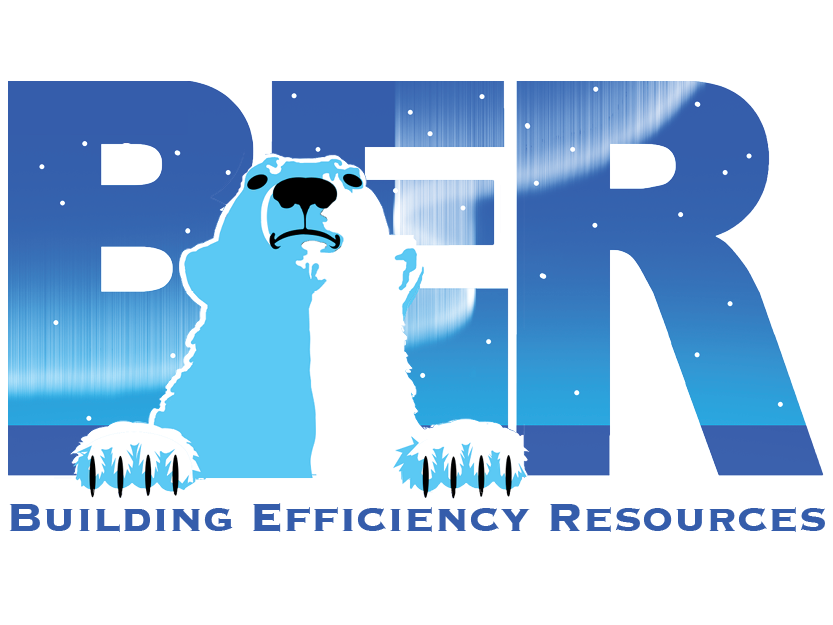Energy Efficient Mortgages (EEMs) and Energy Improvement Mortgages (EIMs)
By Ed Voytovich
We know that new home construction numbers are a function of the economy, and we’ve noticed as well that the economy is off the fairway and into the rough. At the same time, the value of building performance and energy efficiency is beginning to be recognized (even if only one small step at a time) as representing value to the homeowner. Economic, environmental, and political issues on both the national and the international stages all come into play.
Energy Efficient Mortgages (EEMs) and Energy Improvement Mortgages (EIMs) allow home buyers to borrow a sum over and above the amount for which they otherwise qualify, provided that the added cost for energy saving improvements is shown to be less than the Present Value of the energy saved.
“Present Value” is the current value of future cash payments when the payments are discounted by a rate that is a function of the interest rate. For example, the Present Value of $1,000 to be received in two years is $812 when the $1,000 is discounted at an annual rate of 11%. Conversely, $812 invested at an annual return of 11% would produce a sum of $1,000 in two years.
EEMs take into consideration the projected energy savings of an efficient new home over an identical new home built to code. EIMs take into consideration efficiency upgrades to existing homes.
In simple terms, the projected energy savings are regarded by the lender as additional future income for the buyer. Projected energy savings for EEMs or EIMs by Raters under the BER Provider are modeled in REM/Rate. The cost of the rating itself can be included in the EEM as long as the total expenditure for the improvement package is less than the Present Value of the work.
The maximum amount of the portion of an EEM for energy is the lesser of 5% of:
the value of the property, or
115% of the median area price of a single-family dwelling, or
150% of the conforming Freddie Mac limit (the limits for 2011 can be found here)
Lenders who sell their loans to Fannie Mae and Freddie Mac can offer conventional EEMs. They are also available through FHA-approved lenders, and additional benefits are available to veterans using VA EEMs.
203b loans are the basic home loan package that is used by most first-time home buyers. The loans are originated by lenders who partner with FHA, and FHA in turn provides the mortgage insurance. These loans are for one- and two-family new or existing homes, and they may be bundled with EEMs.
The HUD 203k that can be used to finance improvements to owner-occupied one- to four-unit existing structures, and it allows the buyer to include the energy efficiency improvements on the same Present Value terms as the 203b.
Our skills as Raters can help us take advantage of the current economic climate to generate business for ourselves and improvements for our clients, but there’s one small snag. It’s the knowledge gap.
Despite the clear benefits of EEMs, they are rarely used. In the course of preparing this article, I contacted mortgage loan officer Debb Parker of Commonfund Mortgage Corp. here in Syracuse, NY. Debb reported that EEMs are available in Central New York only through the VA program.
Homeowners are unlikely even to know that financing for energy improvements exists. Who would tell them? Probably not the Realtors; the additional requirements to process an EEM can delay the sale transaction and thus delay their payday. That’s a powerful (and perfectly understandable) disincentive. Nor are the Home Inspectors likely to mention such a program, because of the perceived disincentive to the Realtors who so often refer them. Many home inspectors would consider such a recommendation to be beyond their Standards of Practice. Business, like the house, is a system, and anything that affects one part of the system can and very likely will affect the other parts.
Several years ago, two other Raters and I made an appointment with a mortgage brokerage and addressed the staff on the benefits of EEMs. It was a pretty good presentation, but I have never seen a group of individuals outside of a funeral home who were less excited about being in the room. They simply were not interested. They had never heard of such a thing. We learn in other parts of the country, however, that once EEMs take root they become just another loan product. Somebody needs to be the gardener who gets the crop of EEMs under cultivation.
The Rater is the key player who needs to take the lead by bringing together all of the components necessary to make the EEM product easy to understand, easy to apply for, easy to execute, and quick to bring to completion. The Rater must package the product.
Here are our specific recommendations. First, do your homework to be sure you understand exactly what EEMs and EIMs are and how they work. This article gives you a start.
Second, get online and on the phone and track down a lender who deals in these mortgages. If lenders in your area are already offering EEMs and EIMs, you are halfway home, but you may have to work with someone outside your immediate area. You may also have to put together documentation and be prepared to sit down with one or more mortgage companies and show them the benefits to them. A list of reasons why EEMs benefit lenders can be found here.
Third, connect with a team of contractors who are qualified to do work that will achieve the level of success demanded by your energy savings projections as developed in REM/Rate. Don’t expect somebody to do good air sealing or good HVAC or good anything else for your projects unless you know darned good and well that they do it already. You have to be the one who makes it happen.
Finally, once the rest of the team is in place, you will need to market the whole package to the Realtors.
Success for the team you create depends upon clear communication, excellent timing, close coordination, and good work. Remember the connection between time and money: The money only moves and the participants are only happy when the process goes smoothly, efficiently, and swiftly. It’s your job to make that happen.

